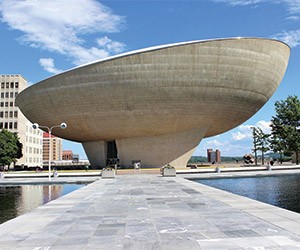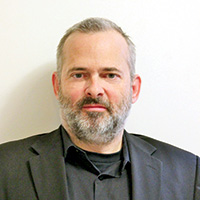From its fur trading origins, Albany has been a center of commerce and innovation for more than 400 years. After turning the tide of the Revolutionary War via the monumental Battle of Saratoga in 1777, Saratoga Springs would become synonymous with pleasurable pursuits, courtesy of its famed spas, racetrack and casinos. With innovation helping to revitalize their economies over the last decade, these enterprising Capital Region anchors are solid investments in positive group outcomes.
Made in Albany
New York’s capital since 1797, Albany was first established as a fur trading outpost by the Dutch West India Company following explorer Henry Hudson’s discovery of the locale in 1609. After transitioning into an agrarian economy, Albany became a manufacturing and banking powerhouse following the opening of the Erie Canal in 1825 and subsequent arrival of the railroads.
Producing everything from beer and billiard balls to textiles and turbines, area towns went evocatively by industrial nicknames: Amsterdam was “Rug City”; Watervliet was “Arsenal City” for its armory; Troy was first “Iron” for its steel then “Collar City” for its shirtmaking; and Cohoes was “Spindle City” for its cotton mills.
In 1887, Thomas Edison relocated his Manhattan-based Edison Machine Works to Schenectady; through merger, the company became global powerhouse General Electric. Also home to the American Locomotive Company, Schenectady was “The City that Lights and Hauls the World.”
Enduring punishing post-WWII decline, the Capital Region turned to innovation for its economic renaissance. Anchoring New York’s Tech Valley—the economic development zone stretching from just above New York City to the Canadian border—Albany and Saratoga have become preeminent players in nanotechnology and semiconductor manufacturing over the past decade.
With government, healthcare, higher education, energy and R&D diversifying the mix, Albany’s group market is also back on solid footing.
“Because of Albany’s growth in New York’s Tech Valley, we have realized great success with scientific and engineering meetings due in large part to our partners in higher education,” explains Gina Mintzer, director of sales for the Albany County CVB.
“The new Albany Capital Center convention facility, opening in early 2017, enhances our ability to showcase Albany to more groups and put Albany on their radar for the future.”
Part of the multi-venue Capital Complex, the addition of the 82,000-square-foot Albany Capital Center will create the largest meeting space in Upstate New York (see Latest & Greatest).
Art History
Groups can also connect with Albany’s commercial past at the city’s venerable museums and updated Industrial Age buildings.
Housed in a former water pumping station, the Albany Heritage Area Visitors Center includes the offices of the Albany County CVB and provides group space that includes museum galleries documenting Albany’s history, for up to 100 attendees, a garden courtyard for 75 people and the Henry Hudson Planetarium, for 60 guests.
Housed in two 19th century pumping buildings, the adjacent Albany Pump Station restaurant serves beers from the C.H. Evans Brewing Company (dating to 1786) and offers banquet space. With tours and tastings, neighboring Albany Distilling Company opened in 2011 as the city’s first licensed distillery since Prohibition.
One of the nation’s oldest museums, the Albany Institute of History & Art (1791) is the primary repository for the region’s heritage and offers event spaces such as the modern Atrium and landmark 19th century Rice House.
Dating to 1836, the New York State Museum is the Capital Region’s leading visitor attraction. In June 2015, plans were announced for a phased four-year renovation project that includes 35,000 square feet of new exhibitions, and new interactive technology and media. Groups of up to 400 have several versatile event spaces, including the Fourth Floor Terrace, overlooking the Empire State Plaza and Capitol Building.
In Schenectady, MiSci (Museum of Innovation and Science) celebrates the area’s scientific and technological heritage. With space for 300 people, the entire main floor, including the gallery and exhibition area, is available for events during non-operating hours.
Groups of 10 to 30 people (45 for school groups) can tour the magnificent State Capitol, New York’s seat of government since the 1880s. Finance is another Albany legacy—the city had at least a dozen banks during its heyday. Housed in the marble-clad National Savings Bank from the early 1900s, 90 State Events offers a lavish ballroom accommodating up to 400, plus theater and classroom space.
PageBreak
Sixty State Place, meanwhile, is the revival of the 1902 National Commercial Bank and Trust. Branded a “temple of finance” in its day, this Beaux-Arts heirloom flexibly hosts up to 700 people for galas, with unique spaces such as the original vault.
Well Springs
Under an hour’s drive to the north, ancient Serachtague (“place of swift water”) was sacred to local Native Americans for its naturally carbonated mineral springs. Established in 1791, Saratoga Springs would tap these healing waters to become “Queen of the Spas” for much of the 19th and 20th centuries, when it was also known as “America’s Monte Carlo” for its casino industry. Opened in 1864, the legendary Saratoga Race Course elevated the city to lasting prominence in horse racing.
Following decline in the post-Depression years, recovery began with investments like the event-capable Saratoga Performing Arts Center (SPAC). Opened in 1966 and summer home of the New York City Ballet and the Philadelphia Orchestra to this day, SPAC celebrates its golden anniversary this summer.
Since 1978, the Saratoga Economic Development Corporation (SEDC) and partner agencies have fostered economic rejuvenation, attracting, retaining or expanding more than 200 area start-ups, multinational corporations and other enterprises.
SEDC-supported projects include the Luther Forest Technology Campus. Offering 2 million square feet of space for nanotech manufacturing and R&D just south of Saratoga Springs, the 1,414-acre campus scored a major coup in 2009 by attracting Silicon Valley-based semiconductor powerhouse GlobalFoundries. The worldwide company, which acquired IBM’s computer chip business in 2014, has built a $12 billion fabrication facility at the site.
These and other investments have boosted Saratoga’s meetings profile. One shining example is SEMI, the global association serving the manufacturing supply chain for the micro- and nano-electronics industries. After relocating its annual Advanced Semiconductor Manufacturing Conference to Saratoga Springs five years ago, the organization continues to grow attendance with glowing praise for the destination.
“The tech sector, specifically semiconductor, advanced manufacturing and renewable energies, continue to drive large conferences, small meetings and corporate transient business to our hotels and meetings venues,” says Todd Garofano, president of the Saratoga Convention & Tourism Bureau. “We continue to collaborate with our economic development partners to find new business opportunities for Saratoga.”
“Horse power” also drives the local economy. Generating an estimated $237 million in annual economic impact (up 9 percent from 2011), Saratoga Race Course is also a winning “purse” for groups, including dining and walking tours. Across the street, the National Museum of Racing and Hall of Fame hosts gatherings for five to 400 people, buyouts included. At the Saratoga Casino and Raceway, groups have customized dining and event options, plus a new hotel opening this summer.
Established in the early 1900s to preserve the city’s then-threatened mineral waters, 2,300-acre Saratoga Spa State Park, a National Historic Landmark, is home to SPAC and diverse other group resources, including the Hall of Springs; National Museum of Dance, the Saratoga Automobile Museum and the historic 124-room Gideon Putnam Resort, with meeting space and circa-1935 Roosevelt Baths & Spa.
Its gaming legacy remembered at event-capable Canfield Casino, an 1860 treasure in scenic Congress Park that includes the Saratoga Springs History Museum, Saratoga Springs is a hard bet to resist. Yet, with the Adirondacks beckoning just to the north, groups can also access proximate destinations such as Lake George and Cooperstown.
With enduring favorites that include the National Baseball Hall of Fame and Farmers’ Museum, the latter is also home to perennial group base The Otesaga Resort Hotel. Opened in 1909 along Lake Otsego, this AAA Four Diamond Georgian-style classic followed up the 2014 renovation of all 132 guest rooms and lobby with the new Hawkeye Spa last year. Along with its 18-hole Leatherstocking Golf Course, heated outdoor pool and recreational activities on the lake, the Otesaga comes with 30,000 square feet of versatile space in 14 meeting rooms, including a 2,600-square-foot ballroom.







